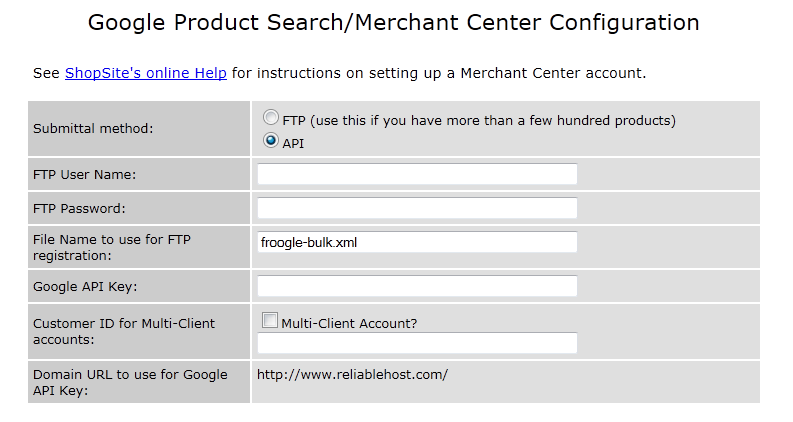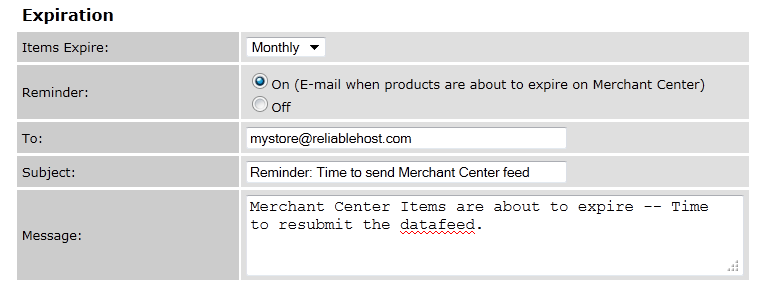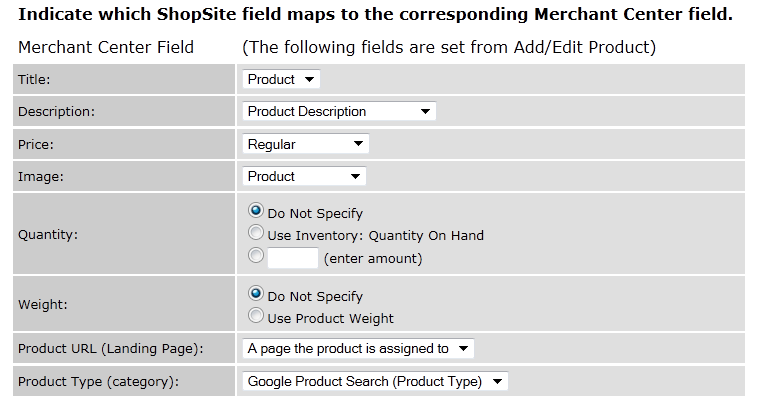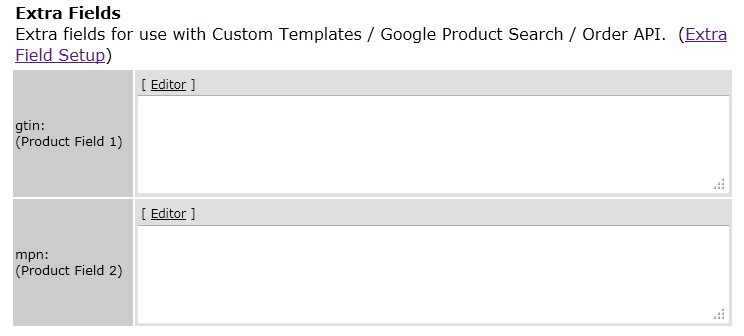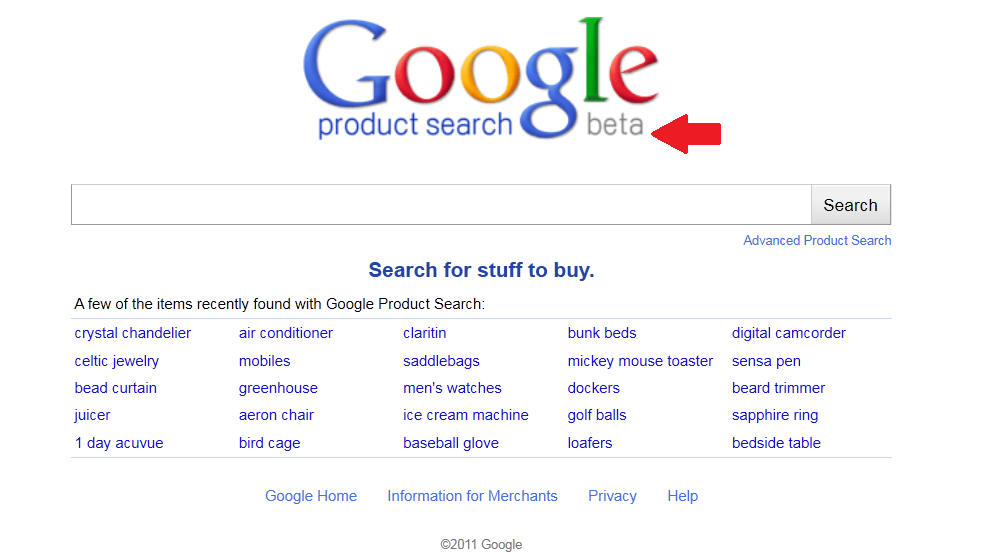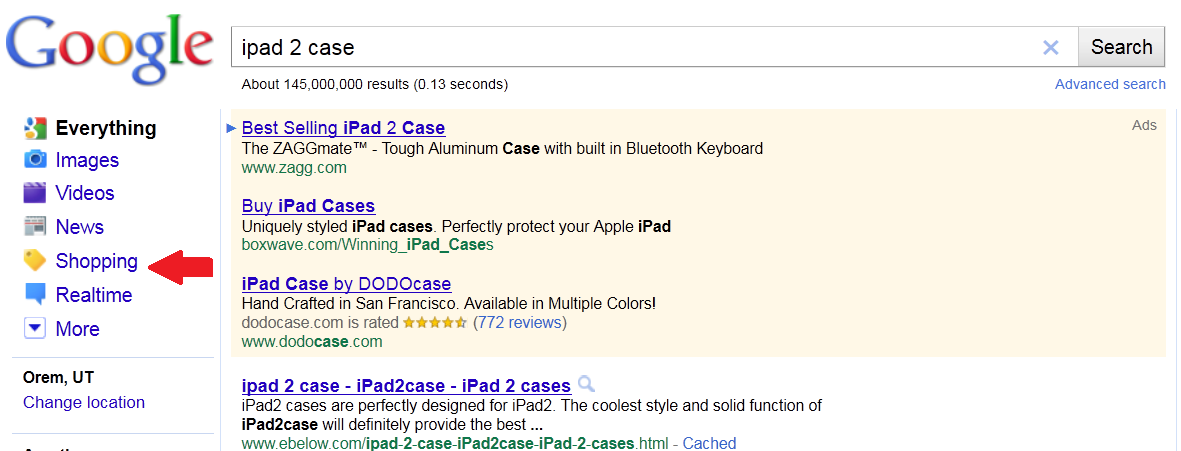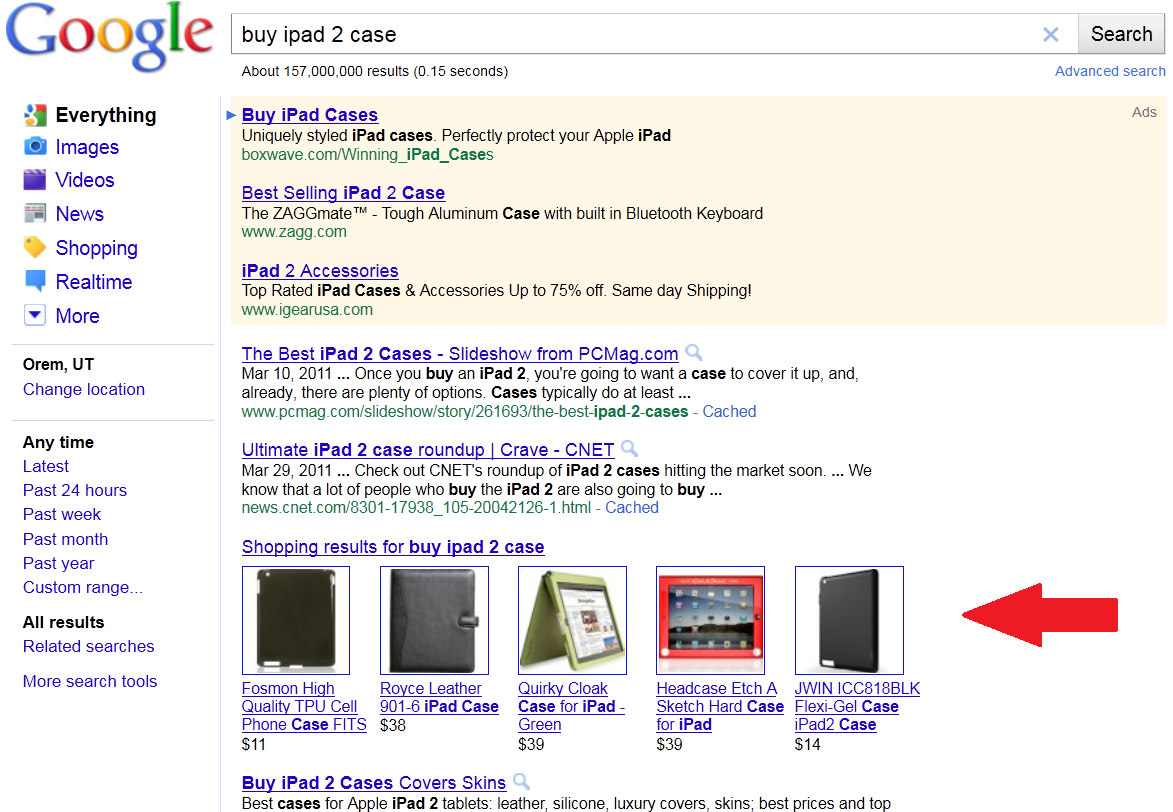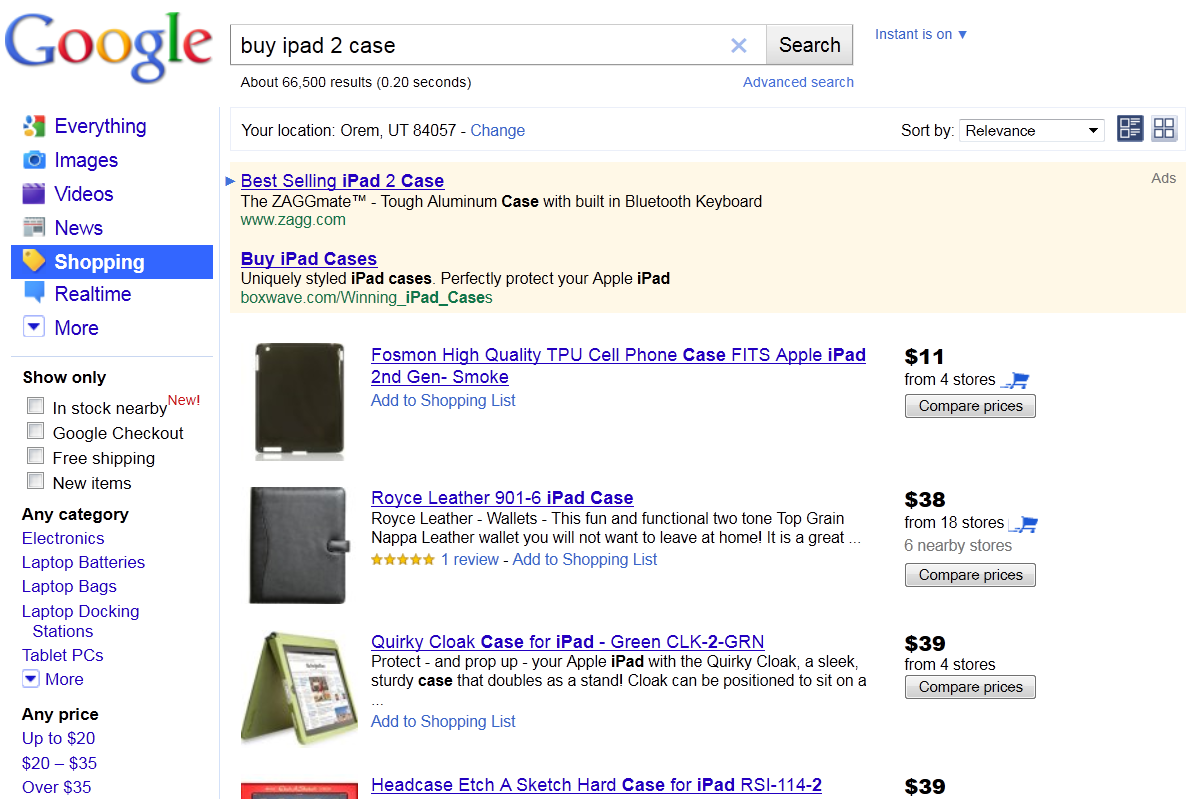ShopSite and Google Product Search
Last time, I discussed the value of having your products listed in Google Product Search. Now I’d like to show you how easy it is for merchants that are using ShopSite Manager or Pro to submit products to Google Product Search. If you are using ShopSite Starter, then you only have a few products, so you can quickly and easily enter your products into your Google Product Search account by hand. But if you have many products, both ShopSite Manager and Pro make it simple to submit your products to Google. In ShopSite, go to Merchandising > Google Services > Product Search and click the Configure button. Let’s break it down by section. Starting at the top, you’ll see the following:
The first thing to notice is that there are two ways to submit – FTP and API. The FTP method is used if you have many products (as in, over a couple hundred.) It creates a file and places it on Google’s upload server that Google retrieves at their convenience, so you may not get an immediate response as to whether the feed was accepted or not. The API method gets an immediate response from Google for each product submitted, so you can quickly know if it was successful or not. Depending on which method you use (FTP or API), you would fill in the appropriate fields from your Google account.
The next section of the Configuration screen allows you to set up an e-mail reminder:
When you submit your products to Google, you indicate when they will expire (Monthly, Weekly, or Daily.) Ideally, you will resubmit your products before they expire, since it may take Google a day or two before the products are validated and relisted. The next Configuration section allows you to map Google Merchant Center Fields to the corresponding ShopSite field.
In the example settings above, ShopSite uses the Product name as the Title field that is sent to Google. Likewise, the Regular price is sent for the Price field (we could have also used the On Sale price) and so forth. You can also indicate the Quantity on hand, the Weight, the landing page that Google will link to, etc. Google also wants to know the Product Type. When you create a product in ShopSite (Products > Add a Product), you have the option to set the Product Type as illustrated below.
If you’ve indicated that ShopSite should include this product in the feed sent to Google, then the other fields will also be sent for the corresponding categories.
Recently, Google began requiring that two out of three unique product identifiers be sent for each product — Brand, Global Trade Item Number (GTIN), and/or Manufacturer Part Number (MPN). A GTIN could be a Universal Product Code (UPC) or International Standard Book Number (ISBN). In version 10 of ShopSite, merchants can add a GTIN or MPN by using an Extra Product Field (set up in Preferences > Extra Fields), as I’ve done below.
If we now go back to Google Product Search Configuration, you’ll see a section where Extra Product Fields are displayed. Just check the appropriate box(es) to have them automatically sent when ShopSite submits the feed.
Once you have Google Product Search configured, it is easy to submit all of the products that you’ve indicated to Google with the Send Feed button.
